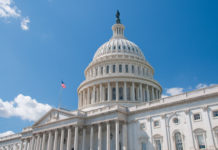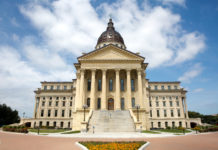CMS issued updated guidance on federal emergency preparedness requirements Appendix Z of the State Operations Manual – Emergency Preparedness, effective Feb. 1, 2019. The new guidance is to be communicated to state agency survey staff within 30 days.
CMS Quality, Safety & Oversite Memorandum QSO19-06-ALL identifies several revisions applicable to nursing facilities:
Infectious Diseases (Definitions; E004). CMS has added “emerging infectious diseases” to the definition of an “all-hazards approach” to emergency preparedness. According to the new guideline, “planning for using an all-hazards approach should also include emerging infectious disease (EID) threats. Examples of EIDs include Influenza, Ebola, Zika Virus and others.” CMS indicates at Tag E0004 that a facility’s emergency plan should include “EIDs such as Influenza, Ebola, Zika Virus and others” and notes that “[t]hese EIDs may require modifications to facility protocols to protect the health and safety of patients, such as isolation and personal protective equipment (PPE) measures.”
Alternate Source Power/Emergency Standby Power Systems (E0015/E0041). CMS has added guidance under Tag E0015 and Tag E0041 to provide clarifications about alternate power, including concerning portable/mobile generators. Highlights of the updated guidance include:
- Regardless of the alternate sources of energy a facility chooses to use, it must be in accordance with local and state laws, manufacturer requirements, as well as applicable Life Safety Code requirements.
- Facilities are not required to heat and cool the entire building evenly, but must ensure safe temperatures are maintained in those areas deemed necessary to protect patients, other people who are in the facility, and for provisions stored in the facility during the course of an emergency, as determined by the facility risk assessment. If unable to meet the temperature needs, a facility should have a relocation/evacuation plan (that may include internal relocation, relocation to other buildings on the campus or full evacuation). The relocation/evacuation should take place in a timely manner so as not to expose patients and residents to unsafe temperatures.
- If a Hospital, Critical Access Hospital or long-term care facility determines – based on its risk-assessment – that the use of a portable and mobile generator would be the best way to accommodate for additional electrical loads necessary to meet subsistence needs required by emergency preparedness plans, policies and procedures, then NFPA requirements on emergency and standby power systems such as generator installation, location, inspection and testing, and fuel would not be applicable to the portable generator and associated distribution system, except for NFPA 70 – National Electrical Code. (See E-0015 for Interpretive Guidance on portable generators.)
Procedures for Tracking Staff & Residents (E0018): CMS has inserted this additional guidance: “We also recommend facilities ensure they follow their evacuation procedures as outlined under this section during disasters and emergencies. Facilities are required follow all state/local mandates or requirements under most CoPs/CfCs. If your local community, region, or state declares a state of emergency and is requiring a mandatory evacuation of the area, facilities should abide by these laws and mandates.”
Emergency Preparedness Training Program (E0037): Facilities may contract with individuals providing services who also provide services in multiple surrounding areas. For instance, a facility may contract a nutritionist who also provides services in other locations. Given that these contracted individuals may provide services at multiple facilities, it may not be feasible for them to receive formal training for each of the facilities for emergency preparedness programs. The expectation is that each individual knows the facility’s emergency program and their role during emergencies, however the delivery of such training is left to the facility to determine. Facilities in which these individuals provide services may develop some type of training documentation- i.e. the facility’s emergency plan, important contact information, and the facility’s expectation for those individuals during an emergency etc. which documents that the individual received the information/training. Furthermore, if a surveyor asks one of these individuals what their role is during a disaster, or any relevant questions, then the expectation is that the individual can describe the emergency plans/their role.
Testing Requirements (E0039): An actual emergency event or response of sufficient magnitude that requires activation of the relevant emergency plans meets the annual exercise requirement and exempts the facility for engaging in a community-based full-scale exercise or individual, facility-based mock disaster drill for one year following the actual event; and facilities must be able to demonstrate this through written documentation. If a facility activates its emergency plan twice in one year, then the facility would be exempt from both exercises (community-based full-scale exercise and the secondary exercise- individual, facility based mock disaster drill, table top exercise) for one year following the actual events.



